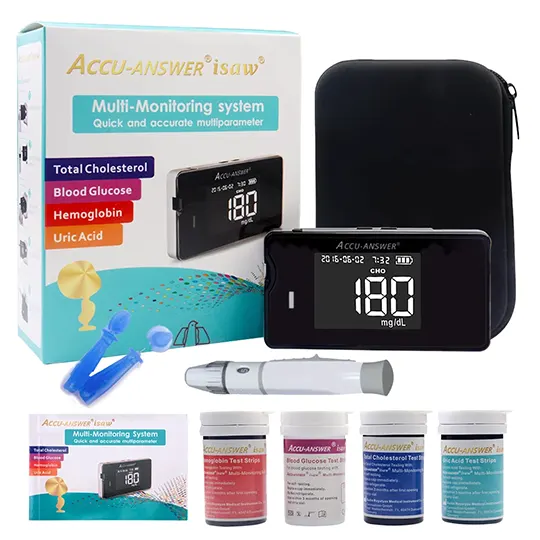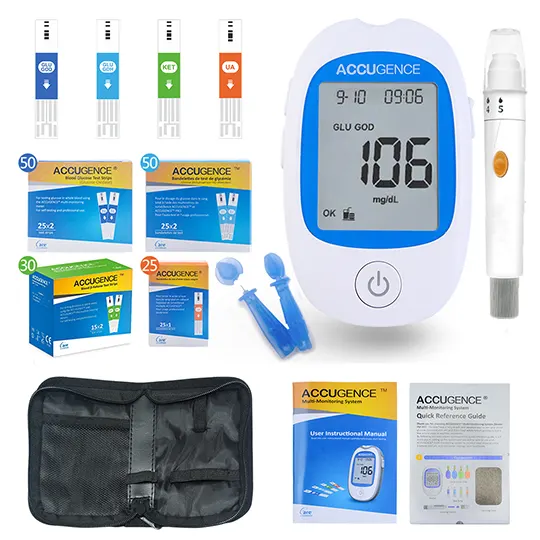Dosing and uses of Augmentin, Augmentin XR (amoxicillin/clavulanate)
Adult dosage forms and strengths
amoxicillin/clavulanate
oral suspension
- (125mg/31.25mg)/5mL
- (200mg/28.5mg)/5mL
- (250mg/62.5mg)/5mL
- (400mg/57mg)/5mL
- (600mg/42.9mg)/5mL
tablet
- 250mg/125mg
- 500mg/125mg
- 875mg/125mg
tablet, extended release
- 1000mg/62.5mg
tablet, chewable
- 200mg/28.5mg
- 400mg/57mg
Lower Respiratory Tract Infection
β-lactamase−producing strains of Haemophilus influenzae and Moraxella catarrhalis
Mild to moderate: 500/125 mg PO q12hr or 250/125 mg PO q8hr for 10 days
Severe: 875/125 mg PO q12hr or 500/125 mg PO q8hr or 2000 mg (2 extended-release tabs) PO q12hr for 7-10 days
Chronic Obstructive Pulmonary Disease
500 mg PO q8hr
Acute Bacterial Sinusitis
β-lactamase−producing strains of H influenzae and M catarrhalis
2000 mg (2 extended-release tablets) PO q12hr for 10 days
Animal/Human Bite Wounds
875 mg PO q12hr or 500 mg PO q8hr for 3-5 days
Erysipelas
875 mg PO q12hr or 500 mg PO q8hr for 7-10 days
Pyelonephritis
β-lactamase−producing strains of Escherichia coli, Klebsiella spp, and Enterobacter spp
875 mg PO q12hr or 500 mg PO q8hr
Skin Abscess
β-lactamase−producing strains of Staphylococcus aureus, E coli, and Klebsiella spp
875 mg PO q12hr
Diabetic Foot
Mild to moderate, localized cellulitis
2000 mg (2 extended-release tablets) PO q12hr for 7-14 days
Group A Streptococci, Chronic Carrier
40 mg/kg/day PO divided q8hr for 10 days; not to exceed 2000 mg/day
Dosing Modifications
Renal impairment
- CrCl <30 mL/min: Do not use 875/125 mg tablet or extended-release tablets
- CrCl 10-30 mL/min: 250-500/125 mg PO q12hr
- CrCl <10 mL/min: 250-500/125 mg PO q24hr
- Hemodialysis: 250-500/125 mg PO q24hr; administer additional dose both during and at end of dialysis
Hepatic impairment
- Dose with caution; monitor hepatic function regularly
Administration
Take with meals to avoid GI upset
Take suspension at start of meal to enhance absorption
Dysphagia: May substitute 250 mg/5 mL suspension for 500/125 mg tablet; may substitute 200 mg/5 mL or 400 mg/5 mL suspension for 875/125 mg tablet
Pediatric dosage forms and strengths
amoxicillin/clavulanate
oral suspension
- (125mg/31.25mg)/5mL
- (200mg/28.5mg)/5mL
- (250mg/62.5mg)/5mL
- (400mg/57mg)/5mL
- (600mg/42.9mg)/5mL
tablet
- 200mg/28.5mg
- 250mg/125mg
- 500mg/125mg
- 875mg/125mg
- 1000mg/62.5mg
tablet, chewable
- 200 mg/28.5mg
- 400 mg/57mg
<40 kg
Dosages based on amoxicillin
<3 months old
- 30 mg/kg/day PO (125 mg/5 mL or chewable tablets) divided q12hr
>3 months old
- Less severe infections: 20 mg/kg/day PO (125 mg/5 mL or 250 mg/5 mL) divided q8hr or 25 mg/kg/day PO (200 mg or 400 mg chewable tablets; 200 mg/5 mL or 400 mg/5 mL) divided q12hr
- Severe infections, lower respiratory tract infections, sinusitis, otitis media: 40 mg/kg/day PO (125 mg/5 mL or 250 mg/5 mL) divided q8hr or 45 mg/kg/day PO (200 mg or 400 mg chewable tablets; 200 mg/5 mL or 400 mg/5 mL) divided q12hr
Acute otitis media
- S pneumoniae, nontypeable H influenzae, M catarrhalis
- 80-90 mg/kg/day PO divided q12hr for 10 days (may be 5-7 days for children >6 years old with mild-to-moderate disease)
Community-acquired Pneumonia
Mild to moderate infection
- 90 mg/kg/day PO divided q12hr; not to exceed 4000 mg/day
H. influenzae
- 45 mg/kg/day PO divided q8hr or 90 mg/kg/day PO divided q12hr
>40 kg
Dose according to adult recommendations
Dosing Considerations
Because of the different amoxicillin-to-clavulanate ratios in the 250-mg tablet (amoxicillin 250 mg, clavulanate125 mg) and the 250-mg chewable tablet (amoxicillin 250 mg, clavulanate 62.5 mg), the 250-mg tablet should not be used if the pediatric patient weighs <40 kg
Safety and efficacy of extended-release tablets in children <16 years old have not been established
Augmentin, Augmentin XR (amoxicillin/clavulanate) adverse (side) effects
>10%
Diarrhea (3-34%; varies upon dose and regimen)
1-10%
Diaper rash (3.5%)
Mycosis (3.3%)
Nausea (2-3%)
Rash (1-3%)
Vomiting (1-2.2%)
Loose stool (1.6%)
Candidiasis (1.4%)
Vaginitis (1%)
<1%
Hypersensitivity reactions
Anaphylaxis
Anemia
Thrombocytopenia
Leukopenia
Agranulocytosis
Hepatoxicity
AST/ALT elevation
Pseudomembranous colitis
Serum sickness
Abdominal discomfort
Cholestatic jaundice
Flatulence
Warnings
Contraindications
Allergy to penicillins
Previous history of cholestatic jaundice/hepatic dysfunction associated with amoxicillin/clavulanate
Extended release: Hemodialysis patients and severe renal impairment (CrCl <30 mL/min)
Cautions
Allergy to cephalosporins, carbapenems
Different tablets are not interchangeable, because ratios of amoxicillin to clavulanate are different
Extended release tablets not for use in renal impairment (CrCl <30 mL/min)
Incidence of diarrhea is higher than with amoxicillin alone
Unknown safety and efficacy of extended-release tablets in patients <16 years old
Risk of Clostridium difficile-associated diarrhea (CDAD); consider in patients who present with diarrhea after antibiotic use; CDAD has been known to occur over 2 months after antibiotic therapy; if suspected, discontinue drug immediately and administer appropriate fluid/electrolyte therapy, protein supplementation, and C difficile antibiotic treatment
Risk of bacterial or fungal superinfections; if suspected, discontinue drug immediately and administer appropriate therapy
High percentage of patients with mononucleosis reported to develop rash during therapy; ampicillin-class antibiotics not recommended in these patients
Use caution in hepatic impairment; hypatic dysfunction (rare) is more common in elderly and/or males and prolonged therapy may increase risk; may occur after completing therapy
Pregnancy and lactation
Pregnancy category: B
Lactation: Drug excreted in breast milk; use caution
Pregnancy categories
A: Generally acceptable. Controlled studies in pregnant women show no evidence of fetal risk.
B: May be acceptable. Either animal studies show no risk but human studies not available or animal studies showed minor risks and human studies done and showed no risk.
C: Use with caution if benefits outweigh risks. Animal studies show risk and human studies not available or neither animal nor human studies done.
D: Use in LIFE-THREATENING emergencies when no safer drug available. Positive evidence of human fetal risk.
X: Do not use in pregnancy. Risks involved outweigh potential benefits. Safer alternatives exist.
NA: Information not available.
Pharmacology of Augmentin, Augmentin XR (amoxicillin/clavulanate)
Mechanism of action
Amoxicillin binds to penicillin-binding proteins, thus inhibiting final transpeptidation step of peptidoglycan synthesis in bacterial cell walls; addition of clavulanate inhibits beta-lactamase-producing bacteria, allowing amoxicillin extended spectrum of action
It is a semisynthetic antibiotic with a broad spectrum of bactericidal activity, covering both gram-negative and gram-positive microorganisms
Not effective against Mycoplasma and Legionella spp
Absorption
Peak plasma time: 2 hr (amoxicillin); 1.1 hr (clavulanic acid)
Peak concentration: 8-22 mcg/mL (amoxicillin); 0.8-2.6 mcg/mL (clavulanic acid)
AUC: 40-80 mcg•hr/mL (amoxicillin); 2-6 mcg•hr/mL (clavulanic acid)
Distribution
Protein bound: 18% (amoxicillin); 25% (clavulanic acid)
Widely distributed (except CNS)
Metabolism
Partially metabolized by liver
Elimination
Half-life
- Amoxicillin: 3.7 hr (full-term neonates); 1-2 hr (infants and children); 0.7-1.4 hr (adults)
- Clavulanic acid: 0.8-1.4 hr
Excretion: Urine, unchanged; 50-70% (amoxicillin), 25-40% (clavulanic acid)



